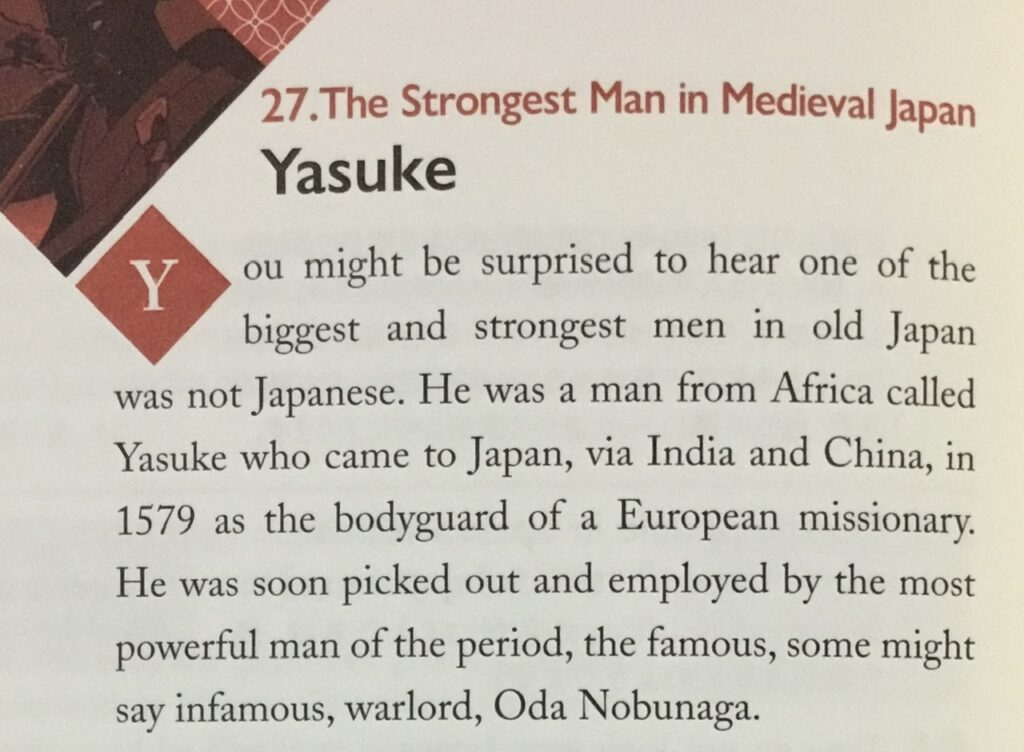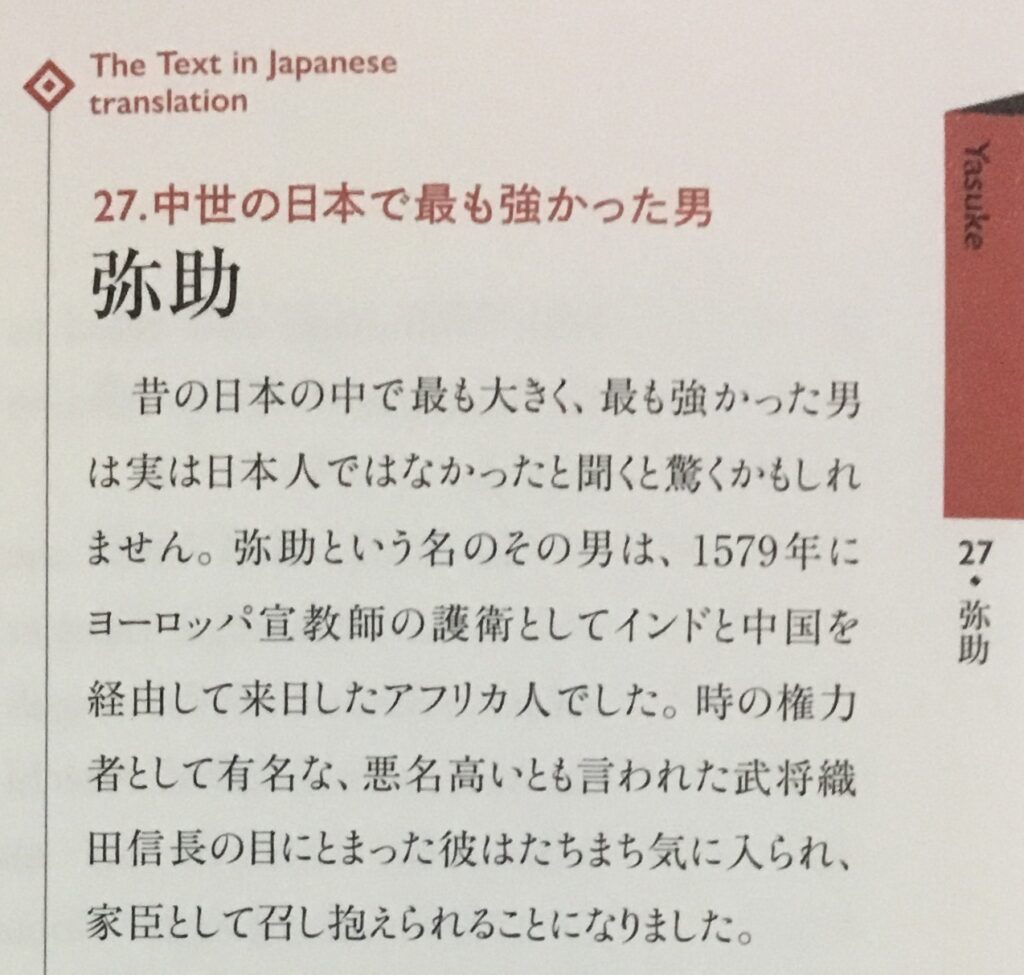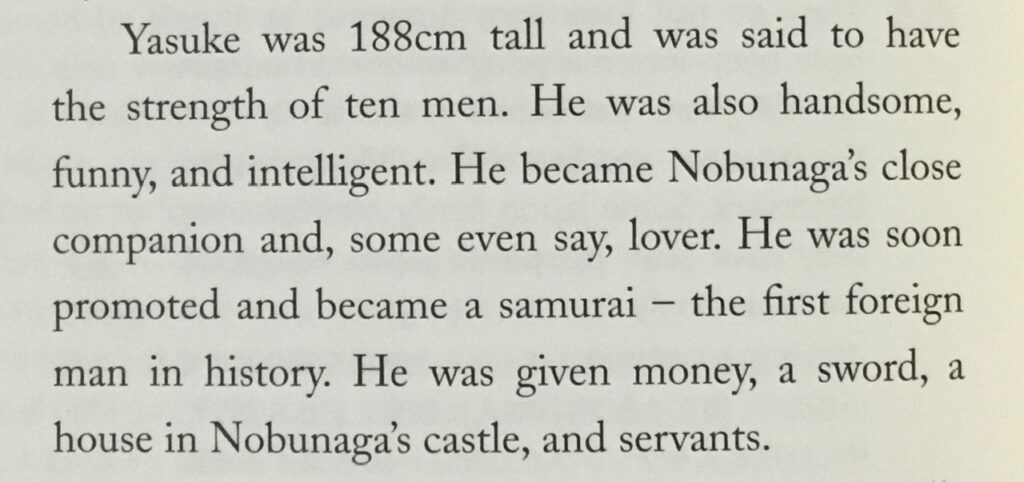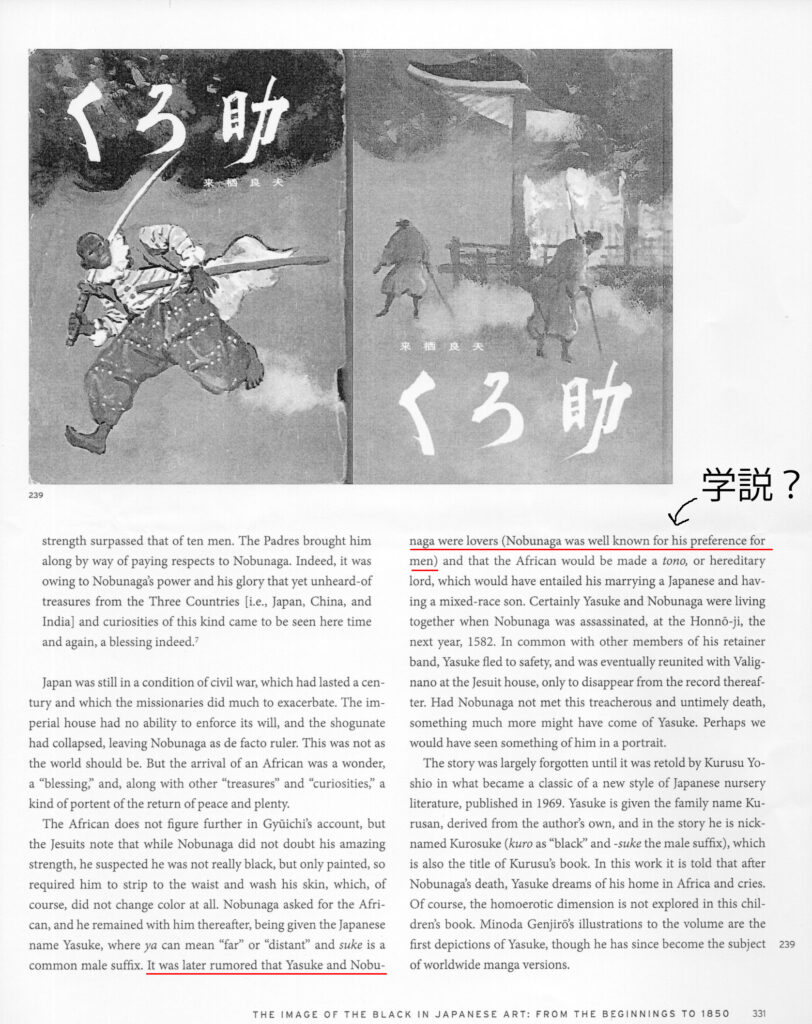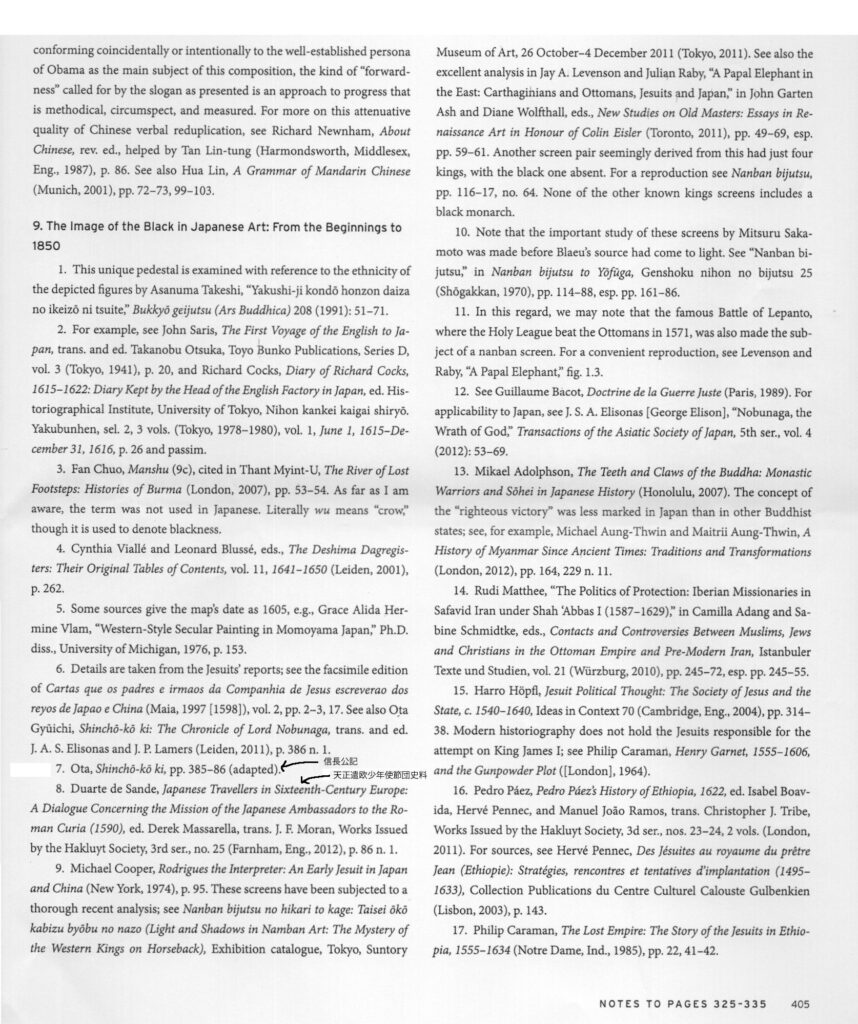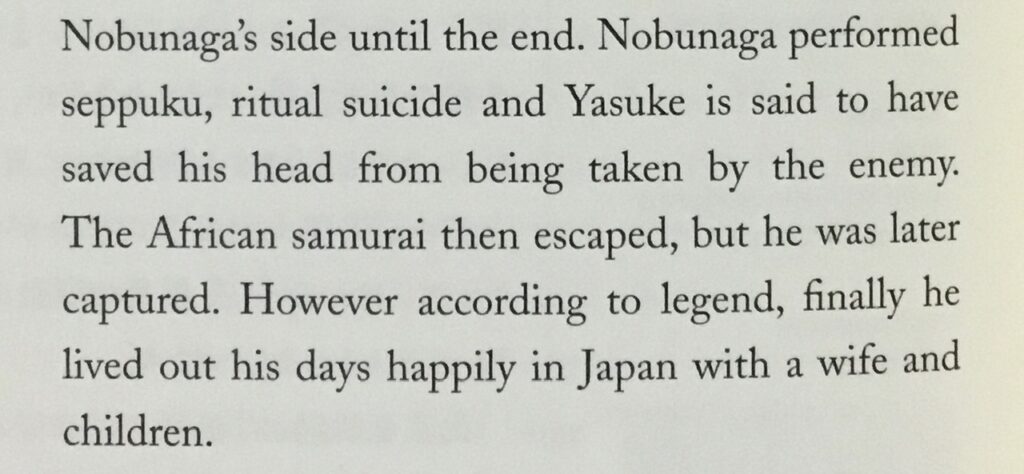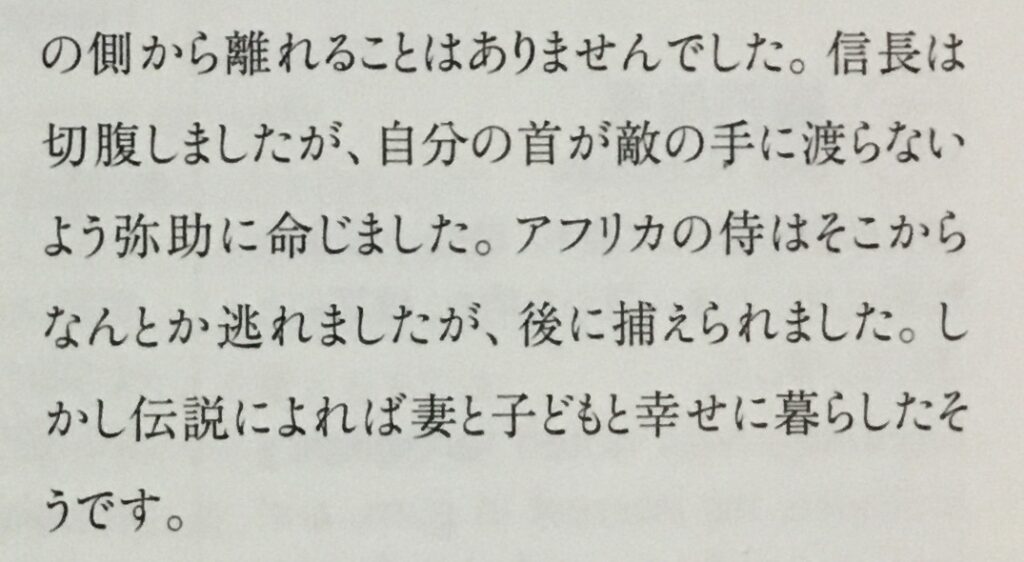Over a month ago, I wrote an article criticizing Assassin’s Creed, particularly focusing on Thomas Lockley’s portrayal of Yasuke. Initially, this issue wasn’t widely discussed in Japan because many Japanese were unaware of how Yasuke was represented overseas.
However, recently, the seriousness of this matter has become more recognized in Japan. One reason the Yasuke issue has gained attention again would be a YouTube video that highlights the problems with Thomas Lockley’s work. Although the video is in German, it is available with subtitles in various languages. This video exposes how Lockley has spread different information about Yasuke in English and Japanese.
During World War I, Perfidious Albion promised independence to Arab leaders while simultaneously making the Sykes-Picot Agreement with France to divide the Middle East, and supporting the establishment of a Jewish state. This duplicity is known in Japan as “三枚舌外交 (three-tongued diplomacy),” derived from “二枚舌 (two-tongued),” which means to say contradictory things or lie.
Today, Thomas Lockley, a British man has complicated the Yasuke issue by using English and Japanese as his literally “two tongues.” Outside Japan, the fabricated history of Yasuke that Lockley has disseminated in English has been accepted as legitimate, featured in the news, and visualized, creating the “Legendary Black Samurai, Yasuke.”
While the Palestinian issue has now become hard to resolve, the Yasuke issue can still be addressed. There is even a petition demanding the rectification of the misconceptions about Yasuke that Lockley has spread.
In this article, I will introduce four of Lockley’s works and examine how he has presented different narratives in English and Japanese. In summary, his Japanese works, subject to peer review, are almost based on historical facts, whereas his English works, utilizing his “creative freedom,” are filled with fanciful history. Japanese people did not realize that a fictional legend of Yasuke was being created overseas due to his “two tongues.”
I summarized with reference to posts by Mr. ラム・マイヤーズ. I would like to express my gratitude to him for the detailed research on Yasuke’s history and to Einfach Japanisch Channel which created that video.
‘Nobunaga and Yasuke’ and ‘African Samurai’
Two of Lockley’s notable works on Yasuke are:
信長と弥助 本能寺を生き延びた黒人侍 Nobunaga and Yasuke: The Black Samurai Who Survived the Honno-ji Incident
Published in Japanese in 2017, Lockley calls it an academic book (but without peer review). It is largely based on sources and has generally not been considered problematic.
African Samurai: The True Story of Yasuke, a Legendary Black Warrior in Feudal Japan
Published in English in 2019, co-authored with novelist Geoffrey Girard, this book mixes fiction with ‘Nobunaga and Yasuke.’ It contains a lot of imaginative narratives.
Lockley’s Contradictory Explanations About Nobunaga’s Head
An example illustrating how Lockley used “two tongues” can be found in his contradictory explanations about Nobunaga’s head.
In an interview with Time, an English media, Lockley said:
Yasuke was in the temple with Nobunaga when he performed seppuku. “There’s no record, but tradition holds it that [Yasuke] was the one who took Nobunaga’s head to save it from the enemy,” Lockley said. “If Akechi, the enemy, had gotten the head and he’d been able to hold up the head, he would have had a powerful symbol of legitimacy.” Lockley explained that an act like that would have given Akechi credibility as a ruler. After the attack on Nobunaga, Akechi did not get much support and was soon defeated in battle. “Yasuke, therefore, by escaping with the head, could have been seen and has been seen as changing Japanese history,” Lockley said.
cited from: https://time.com/6039381/yasuke-black-samurai-true-story/

I’ve never heard of such a theory, and I’m sure 99.9999999% of Japanese people haven’t seen it that way either.
However, in the Japanese version of ‘Nobunaga and Yasuke,’ Lockley wrote:
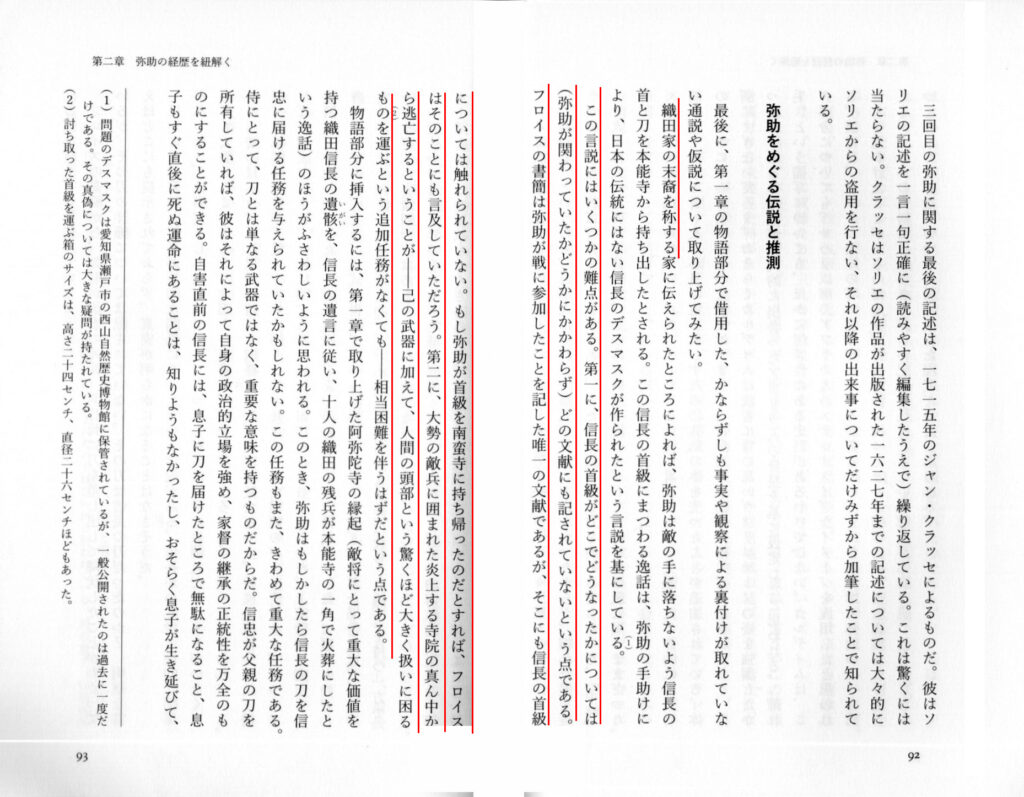
織田家の末裔を称する家に伝えられたところによれば、弥助は敵の手に落ちないよう信長の首と刀を本能寺から持ち出したとされる。この信長の首級にまつわる逸話は、弥助の手助けにより、日本の伝統にはない信長のデスマスクが作られたという言説を基にしている(1)。
この言説にはいくつかの難点がある。第一に、信長の首級がどこでどうなったかについては(弥助が関わっていたかどうかにかかわらず)どの文献にも記されていないという点である。フロイスの書簡は弥助が戦に参加したことを記した唯一の文献であるが、そこにも信長の首級については触れられていない。もし弥助が首級を南蛮寺に持ち帰ったのだとすれば、フロイスはそのことにも言及していただろう。第二に、大勢の敵兵に囲まれた炎上する寺院の真ん中から逃亡するということが——己の武器に加えて、人間の頭部という驚くほど大きく扱いに困るものを運ぶという追加任務がなくても——相当困難を伴うはずだという点である。Translation:
According to the family claiming to be the descendants of the Oda family, Yasuke took Nobunaga’s head and sword out of Honno-ji to prevent them from falling into enemy hands. The anecdote about Nobunaga’s is based on the claim that a death mask, which is not a Japanese tradition, was made with Yasuke’s help(1).
There are several issues with this claim. First, no documents mention what happened to Nobunaga’s head (whether Yasuke was involved or not). The only document mentioning Yasuke’s participation in the battle is Frois’ letters, which do not mention Nobunaga’s head. If Yasuke had taken the head to the Nanban-ji, Frois would have mentioned it. Secondly, escaping from a burning temple surrounded by many enemy soldiers, —even without the additional task of carrying their own weapons along with something as astonishingly large and cumbersome as a human head—, would have been extremely difficult.

Lockley also thinks it would be not credible.
In the English version novel, ‘African Samurai,’ Lockley claims that Nobunaga’s lover, Mori Ranmaru, cut Nobunaga’s head, and Yasuke took Ranmaru’s head. His annotation states:
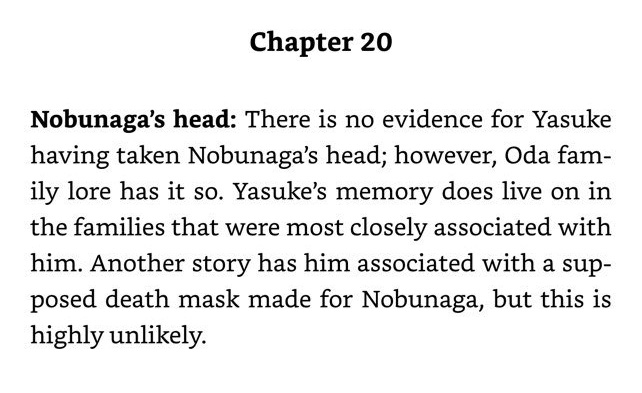
Nobunaga’s head: There is no evidence for Yasuke having taken Nobunaga’s head; however, Oda family lore has it so. Yasuke’s memory lives on in the families closely associated with him. Another story has him associated with a supposed death mask made for Nobunaga, but this is highly unlikely.
In the Japanese version ‘Nobunaga and Yasuke,’ the story is described as coming from a highly suspicious person claiming to be a descendant, and its credibility is questioned. However, in the English version ‘African Samurai,’ it is changed to the Oda family lore. Moreover, in interviews with foreign media, Lockley implies that Japanese people believed Yasuke had taken Nobunaga’s head. It is unbelievable that a historian would exhibit such intellectual dishonesty.
つなぐ世界史 2 Connecting World History 2
This book, published in 2023, is a Japanese history book involving many historians. In such a peer-reviewed history book, how did Lockley portray Yasuke?
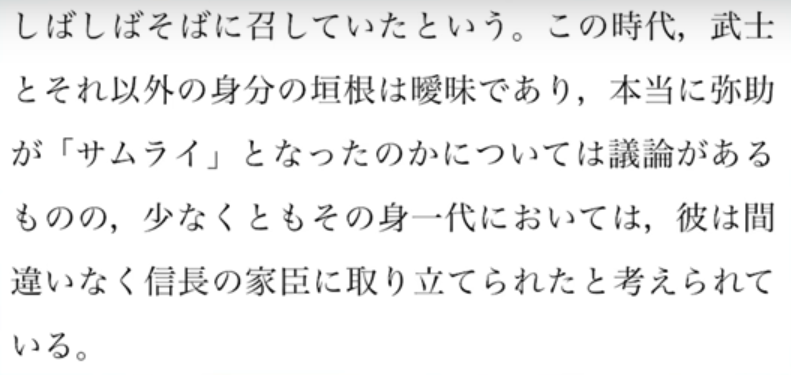
この時代,武士とそれ以外の身分の垣根は曖味であり、本当に弥助が「サムライ」となったのかについては議論があるものの、少なくともその身一代においては、彼は間違いなく信長の家臣に取り立てられたと考えられている。
Translation:
In this era, the boundaries between samurai and other social classes were vague. Although there is debate about whether Yasuke really became a “samurai,” it is believed that he was certainly appointed as a retainer of Nobunaga at least during his own lifetime.
While Lockley has called Yasuke a samurai, here he admits there is debate about his status.
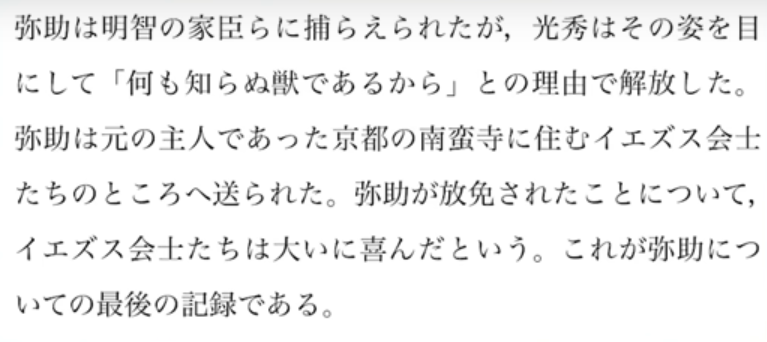
弥助は明智の家臣らに捕らえられたが、光秀はその姿を目にして「何も知らぬ獣であるから」との理由で解放した。弥助は元の主人であった京都の南蛮寺に住むイエズス会士たちのところへ送られた。弥助が放免されたことについて、イエズス会士たちは大いに喜んだという。これが弥助についての最後の記録である。
Translation:
Yasuke was captured by Akechi’s retainers, but Mitsuhide(Akechi), upon seeing him, released him because he considered him a “beast who knew nothing.” Yasuke was sent back to the Jesuits at Nanban-ji in Kyoto, who were his former masters. The Jesuits were greatly pleased by his release. This is the last recorded mention of Yasuke.
Due to the limited sources on Yasuke, the description ends here without mentioning Nobunaga’s head at all. Writing as a historian should focus on dull, unglamorous facts like them. How did Lockley write a 400-page novel of Yasuke, ‘African Samurai’?
英語で読む外国人がほんとに知りたい日本の文化と歴史 Reading in English: Japanese Culture and History that Foreigners Really Want to Know
Published in 2019, this English textbook aims to introduce Japanese culture in English. Written solely by Thomas Lockley, it maximizes his “creative freedom,” and it is fascinating to see him boldly fabricate history.
Translation:
cited from: https://twitter.com/SensouAmei/status/1794771280752943479
Thomas, Lockley. Reading in English: Japanese Culture and History that Foreigners Really Want to Know. Tokyo Shoseki, 2019.
A book seems to be introducing Japanese culture and history in English for foreigners. Under the entry for “Yasuke,” it suddenly states without clear evidence that he “was the strongest in medieval Japan.”
Translation:
cited from: https://twitter.com/SensouAmei/status/1794779313314906199
It claims that “there is a theory that Nobunaga and Yasuke were lovers.”
This baseless story might lead foreigners who are “introduced” to Japanese culture by a Japanese to believe it is a credible theory. It reminds me of the argument that we should not pick up both sides arguments over pseudo-history or pseudo-science. It is problematic to indiscriminately take up baseless theories.
Indeed, 信長公記 (Shinchō kōki) describes Yasuke as “強力十乃人に勝たり (stronger than ten men),” but this would be a Japanese idiom, with other expressions like “百人力 (hundred-man strength)” and “千人力 (thousand-man strength)” also existing.
Regarding Yasuke’s height, Shinchō kōki states he was 6 尺 (shaku) 2部 (bu) (about 183 cm), Lockley might have mistaken it for 6 尺 (shaku) 2 寸 (sun) (about 188 cm). 藤堂高虎 (Tōdō Takatora,) one of a Sengoku daimyo was said to be 190 cm. Yasuke was not the tallest at that time.
Lockley mistranslated the term “器量なり” in Shinchō kōki as “handsome.” This term means “beautiful” or “imposing physique” depending on the context. Modern translations of Shinchō kōki render it as “imposing physique.” I also believe it refers to Yasuke’s physique since this passage talks about his body strength.
Regarding the theory that Nobunaga and Yasuke were lovers, Lockley cites Screech’s The Black in Japanese Art. These papers seems to be the source, but it is trivial information that should not be presented as an academic theory.
Translation:
cited from: https://x.com/laymans8/status/1811042124584063089
Mr. Timon Screech is said to be a renowned art historian, but honestly, his writings on Yasuke contain factual inaccuracies and don’t seem to be written seriously (especially the part about children’s literature). It is problematic to introduce this as an academic theory, and since there are no references cited, it’s unclear whether Mr. Screech created it, or if it’s a tasteless joke.
Even in just these few lines by Lockley, there are more numerous mistakes and historical revisions, such as “intelligent” and “became a samurai.”
Translation:
cited from: https://x.com/SensouAmei/status/1794785012015116700
Lockley clearly states that Nobunaga instructed Yasuke to ensure his head did not fall into enemy hands.
He brings up an entirely uncommon “legend” in Japan that Yasuke lived happily with his wife and children but omits the fact that Yasuke was returned to the Jesuits.
Lockley himself created this ridiculous legend.

I’m aiming to publish my article on Yasuke today, but one of my favorite bullshit claims around him that I’ve come across in my research is that he had descendants.
Thomas Lockley’s book African Samurai is full of these baseless speculations. Read this hilarious passage.
cited from: https://x.com/OliverJia1014/status/1733462912122163708
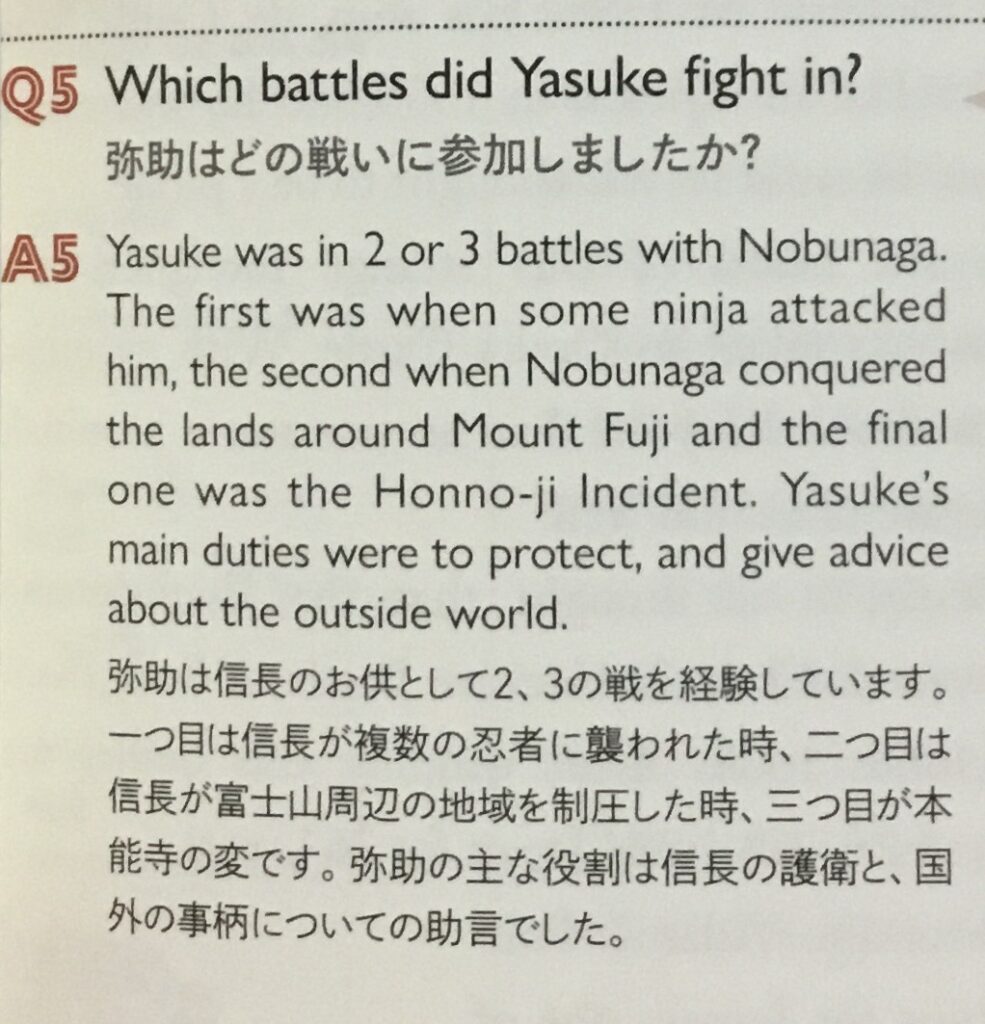
Translation:
cited from: https://twitter.com/SensouAmei/status/1794787990839189959
Lockley claims Yasuke fought when Nobunaga was attacked by ninjas. What is he talking about? Is it really okay to introduce this story to foreigners who want to know Japanese history?
“Conquered the area around Mount Fuji” probably refers to the Kōshū (Takeda) Campaign.
Translation:
cited from: https://x.com/laymans8/status/1796640292688572652
This episode seems to be from Lockley’s novel ‘African Samurai: The True Story of Yasuke, a Legendary Black Warrior in Feudal Japan.’ It’s content is like “Even Iga Ninja boys’ assassination techniques using feints were no match for Yasuke’s huge frame and power.” It should not be introduced.
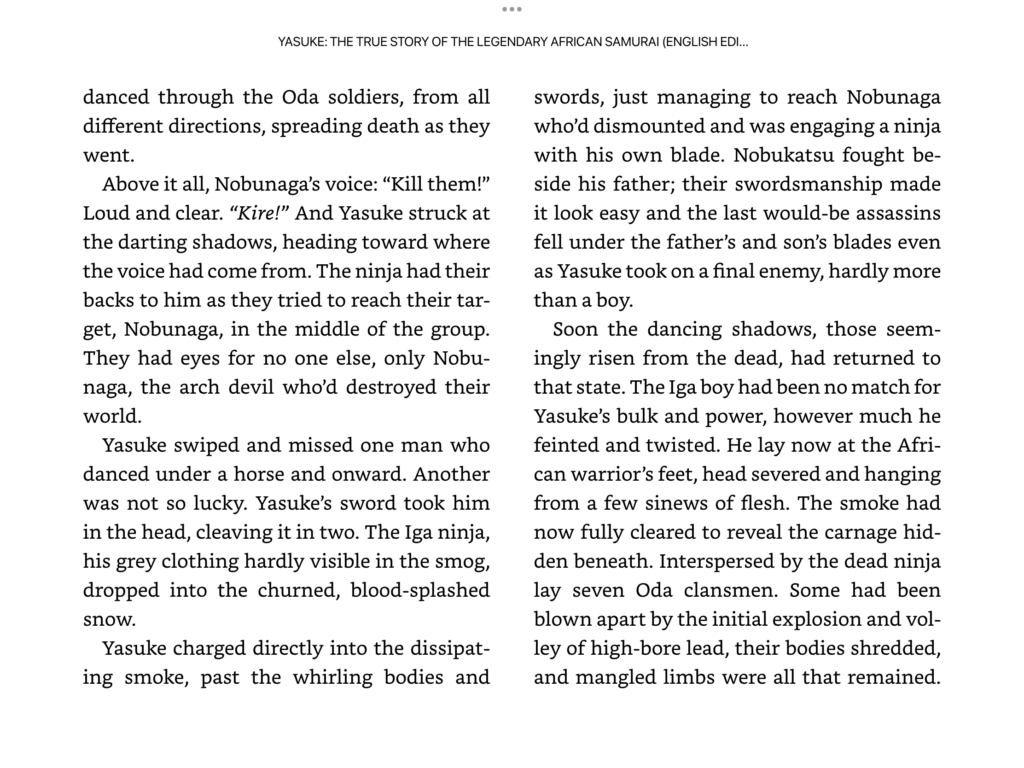

Is this …………………
YASUKE: THE TRUE STORY OF THE LEGENDARY AFRICAN SAMURAI?!
Conclusion: Thomas Lockley Rewrote Yasuke’s History With Two Tongues
Thomas Lockley has attempted to politically correct Japanese history using the two tongues of English and Japanese. In non-peer-reviewed media, he seems to narrate his fantasies as historical facts.
Today, many foreign fans of Yasuke cite Thomas Lockley’s works and news articles to argue that the legendary Black samurai Yasuke existed. To stop this historical revisionism, Lockley himself must retract his claims. He seems to freeze his Facebook account but has not yet retracted his theories.

He admitted and corrected his false claim that Sakujin Kirino fact-checked his work, mentioned in an interview with Japan Times, but he has not retracted the even more blatant lie that “Yasuke was called ‘tono’ (lord), so he can be considered a samurai.“

The dead cannot speak. No matter how carelessly modern historians talk about Nobunaga, Yasuke, and past Japanese people, they cannot complain. Lockley uses the dead to spread political correctness. This is not historiography but mere ideology. Nihon University, which hosts such a “historian,” should take immediate action to address this issue.
For those interested in reading primary sources about Yasuke, this article includes English translations:


